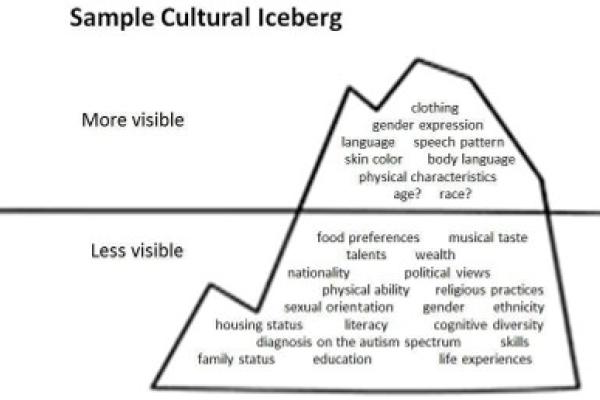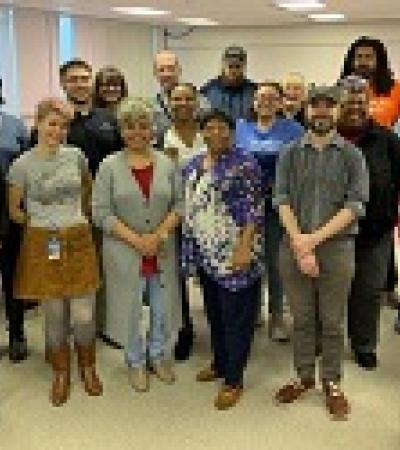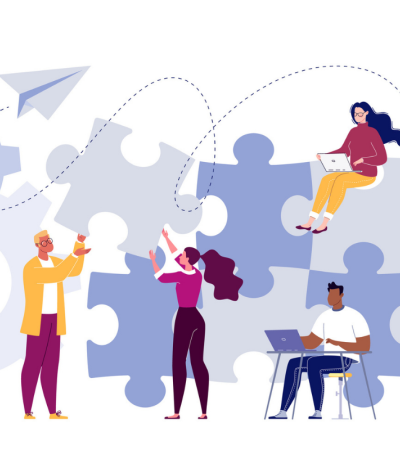Communication is complex. The way people communicate and the beliefs we have are deeply layered; our life experiences impact how we connect and communicate with others.
People with whom we’re communicating also have a lived experience that they’re bringing to our interactions. They also have lenses through which they see the world.
Community engagement asks us to collaborate with diverse groups of people from our communities, some of whom may have very different life experiences than you. To communicate clearly, it can be helpful to be aware of the many layers and hidden experiences that impact communication.
In the Free Library of Philadelphia’s Skills for Community-Centered Libraries work, we use the idea of an iceberg to explore this concept.
The waterline of visibility
The idea of a “cultural iceberg” can help us visualize a person’s lived experiences. If each of us were an iceberg, we would only see what’s above the water. Below the water are many more, rich lived experiences that we can’t see.

You’ll notice that there are aspects of a person that we can see, which we may or may not see accurately because of assumptions we make about appearances. These items above the waterline — such as race, age and gender expression — are what we can observe through looking or listening. They are sometimes but not always, accurately interpreted. (Perhaps you have had an experience in which someone made an incorrect assumption about your age or your gender.)
There are also other core values and individual characteristics that are brought to every interaction that we can’t see. Below the waterline of visibility are the things we usually can’t see in others, like education, skills, housing status, wealth and religion.
Using the cultural iceberg in our library work
Consider the following questions:
- Why is it important to keep this iceberg in mind when performing our daily roles at the library? How does it impact communication?
- What physical characteristics above the waterline may be misinterpreted? Why?
- People reveal more about themselves when they are comfortable and feel welcomed and valued. What are some of the specific strategies your library employs to create an inclusive, welcoming culture that shows patrons they are valued? For example, do you have welcome signs with library hours and programs translated into multiple languages?
- Based on your unique community, consider one additional way you could promote an inclusive, welcoming culture.
- Consider a patron or group of patrons that you have struggled to connect with in the past. What ways could you attempt to connect with this person or group in relation to their iceberg?
What’s in your iceberg?

Now flip the exercise around and create your own iceberg. Think of three items that lie above the surface and five items that lie below the surface.
Looking at your iceberg, which idea(s) did you write that you are certain impact your communication with others? How so? For example, if you’re a parent, you might find it exciting to talk about children with people and enjoy the opportunities to share stories about your children.
Are there aspects of your iceberg that people rarely see? Is there something below the surface that you would like to connect with more people about? Are there ways you can use all parts of your iceberg that can help you connect more deeply with your library community?
Download the Skills for Community-Centered Libraries curriculum.
For more information about the Skills for Community-Centered Libraries curriculum, contact Lynn Williamson, chief, Neighborhood Libraries Services Division, Free Library of Philadelphia, at WilliamsonL@freelibrary.org .



